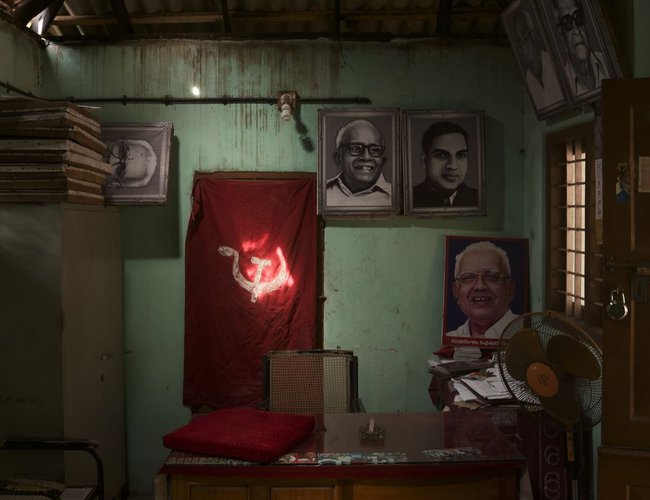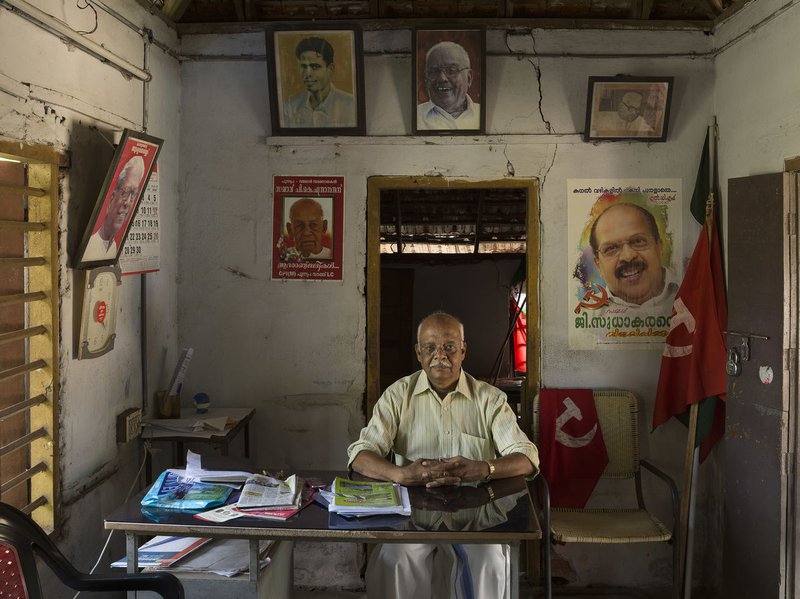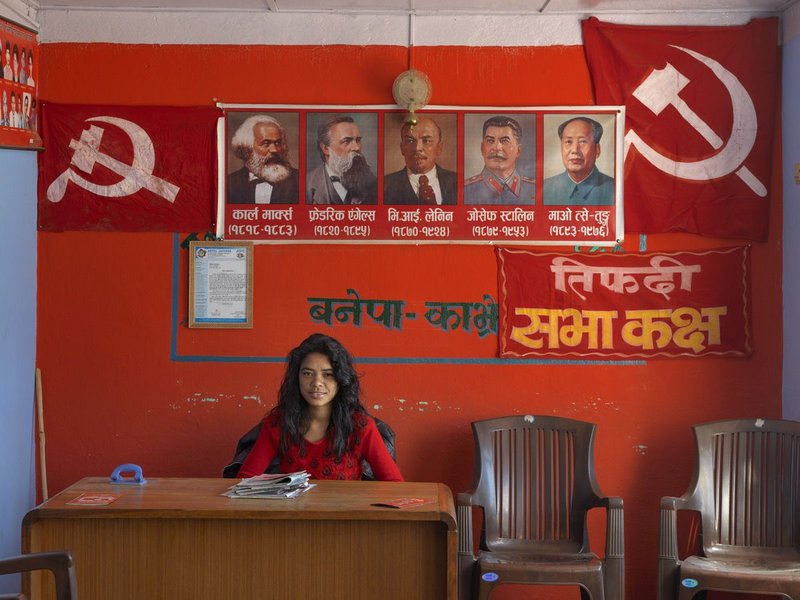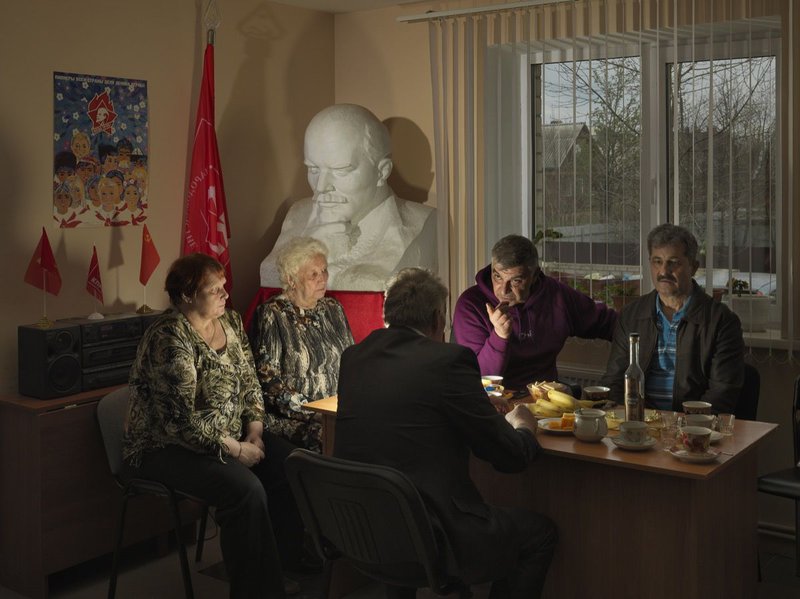
There are only five countries on the planet that still have Communist national governments: China, North Korea, Vietnam, Laos, and Cuba. But there are still outposts to the ideology across the globe, with Communist Party offices located everywhere from New York to Moscow. But in a post-Cold War world, in which communism no longer occupies a central place in the imagination of most Americans, few would ask: what do these headquarters—and the adherents who frequent them—look like today?
Jan Banning, Mararikulam Area, India. Courtesy of Jan Banning.
Dutch photographer Jan Banning set out to answer this question, visiting Italy, Portugal, India (Kerala specifically), Nepal, and Russia, and photographing Communist Party offices and headquarters for his new book Red Utopia (2017). Banning ruled out visiting nations where the Communist Party was actually in power; rather, he was motivated to investigate “what is left” of communism after witnessing rising economic inequality worldwide and the other effects of what he calls “neoliberalism going wild.”
The images themselves are predictably full of striking red tones. Often downtrodden, humble interiors are decorated with hammer and sickle motifs and giant portraits or busts of Karl Marx or Vladimir Lenin. (Banning wasn’t surprised to see such familiar propoganda, but he was struck by “the dimensions of these old heroic icons, and the small spaces they’re cramped in now.”) In general, the photographs don’t mock or caricature this vanishing world, and instead present Banning’s subjects—a man half smiling next to an aged computer, a woman and man locked in conversation over what looks like a beer—in a matter-of-fact manner.
The decline of the communist party was particularly marked in Moscow, Banning said. Where once they dominated Russia, now they have much more modest accommodations. “They were happy someone was paying attention to them,” he laughed. But when Banning visited another headquarters in Strugi Krasnye, in Western Russia, he found a Communist Party outpost that was quite happy with its results in the country’s 2016 legislative elections (though still nowhere close to threatening Putin’s grip on power). The people he met there, Banning writes in the introduction to Red Utopia, tended to have a fairly forgiving view of the Party’s history, downplaying or denying the difficulty of life under Joseph Stalin, along with his repression and violent purges.
Banning insisted on maintaining his artistic independence throughout the photo shoots, which was a sticking point for certain Communist Party officials. Despite months of emails, a visit to South Africa was scuttled after the party officials there wanted to limit him to images of just their corridors and the hallways. He ran into trouble in Portugal, too. After viewing the initial images he had taken there—an empty meeting room with a landscape on the wall, a young party member at his desk, and older member sitting before an ancient-looking computer—the party did not invite him back.
Jan Banning, Banepa, Nepal. Courtesy of Jan Banning.
Banning’s reception in Italy was far different, he said, speculating that this might have been because the communist party there has traditionally been popular with writers, filmmakers, and other artists. “That heritage is still noticeable,” he told me. “So the discussions were more open. They were not bothered by the kind of photography I was doing.” He also said he encountered more young people in Italy’s offices—as evidenced by one image of a woman sitting before a mural that evokes Eugène Delacroix’s Liberty Leading the People (1830) (red flags replacing the tri-color, of course).
Jan Banning, Borovichi, Russia. Courtesy of Jan
Banning.
Ultimately, Banning wants these images to be nuanced. The photographs in Red Utopia are “not simply saying, ‘look, these people are old idiots sticking to their ideology’,” he said. “But I’m also not trying to come up with propaganda that we should all join communist parties now.” His hope was that the photographs would jumble elements of humor and irony, and perhaps lead to viewers having a real, unexpected emotional engagement with their subjects. “It is my conviction that if we manage to confuse people,” Banning said, “that is often the start of a thought process.”
Courtesy: Artsy
- Qatar And Nepal Ink Several MoUs, Returned Home Completing Two Days Visit
- Apr 24, 2024
- Russia Industrialists Met Prime Minister Dahal
- Apr 24, 2024
- President Paudel Hosts Banquet In Honour Of Visiting Qatari Emir
- Apr 24, 2024
- Weather Forecast: Thunder Showers Is Likely At Few Places Of Koshi, Karnali And Sudur Pashchim
- Apr 24, 2024
- Japan Hands Over The Community Center For Disaster Prevention
- Apr 23, 2024















